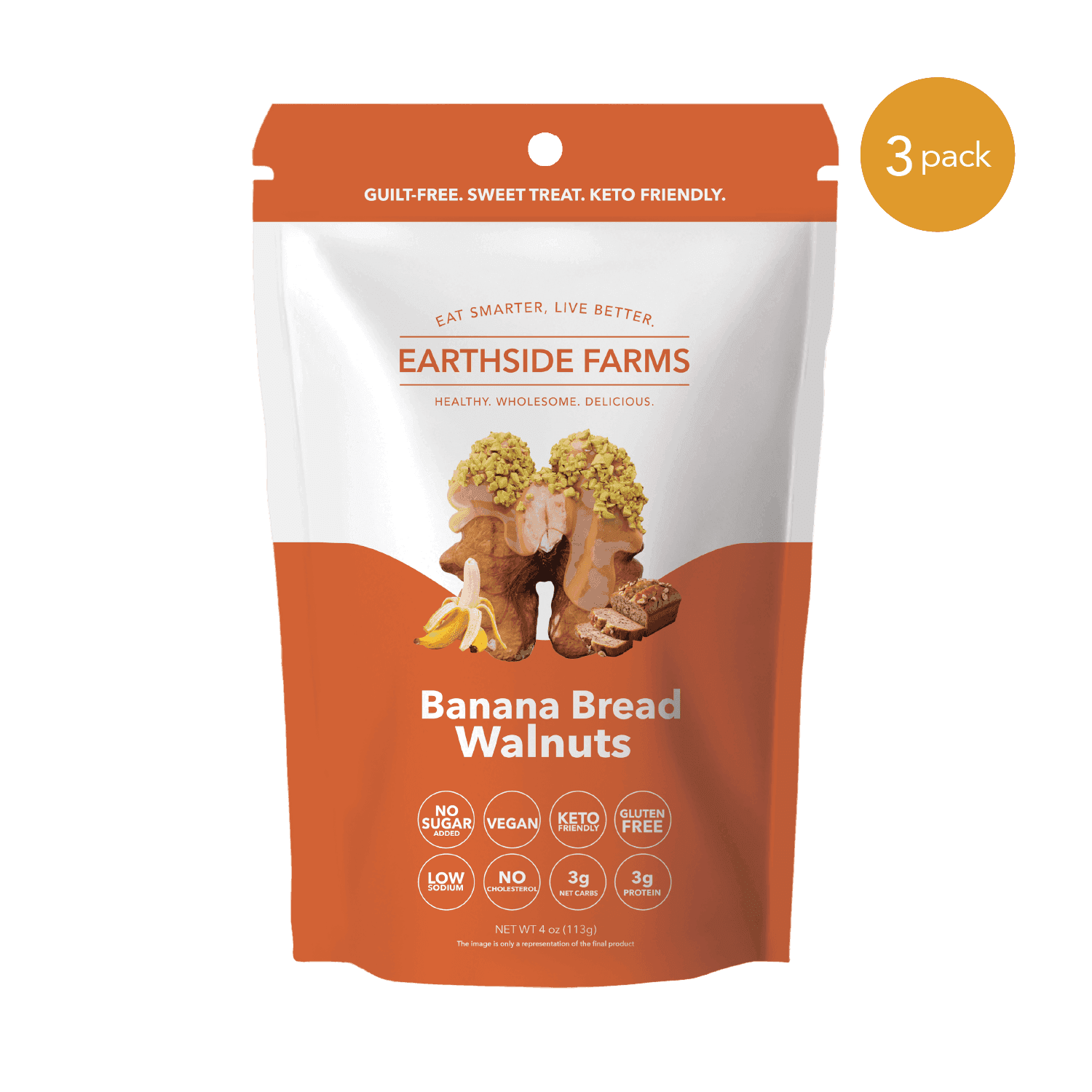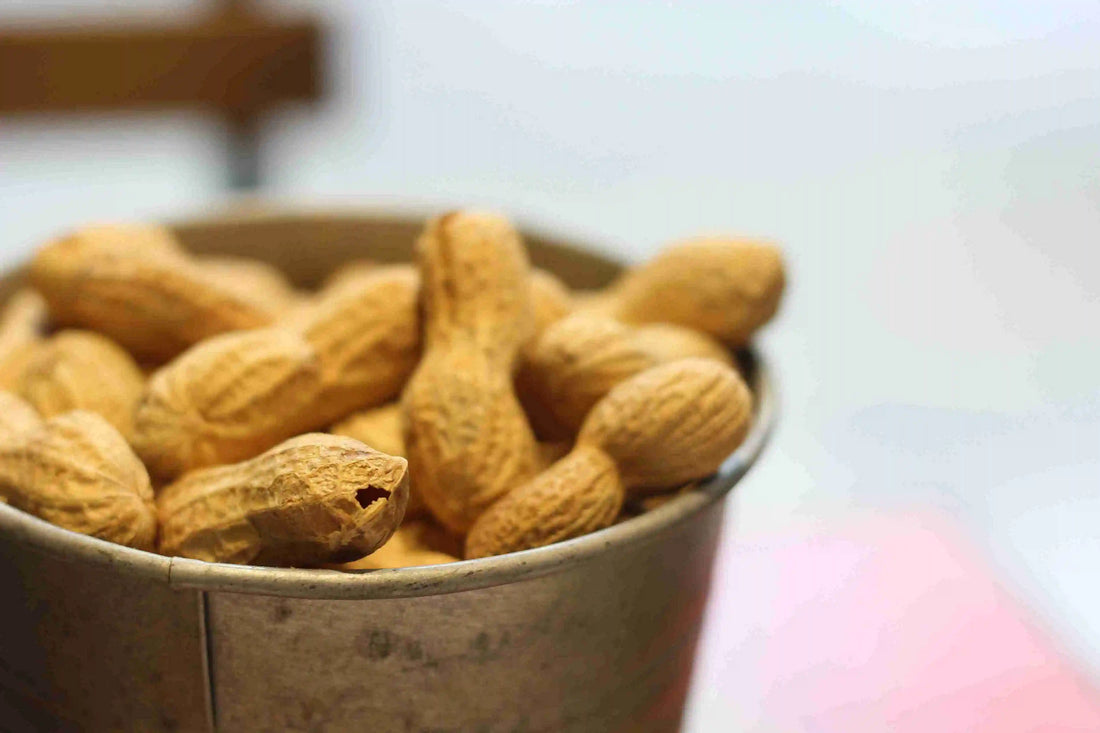Can a handful of peanuts help manage blood sugar, or are they secretly messing with your health?
If you’re on a journey to a healthy lifestyle, every snack counts.
One wrong move can throw your entire day off.
So, are peanuts a good snack option for people who have diabetes?
The short answer is yes, when eaten right.
But hold on.
- What about peanut butter?
- How many peanuts are too many?
- And how do they stack up against almonds or walnuts?
Let’s explore this in our in-depth guide to peanuts and diabetes.
What Does Science Say About Peanuts and Blood Sugar?
Peanuts have a profoundly mellow effect on your blood sugar.
Don’t let the mellow taste fool you.
Unlike high-carb snacks that trigger sharp glucose spikes, peanuts rank low on the glycemic index (GI) — a scale that measures how quickly foods raise blood sugar.
Peanuts have a GI of just 15 and a glycemic load (GL) of 2.4 per 100g, placing them well within the low-GI category.
That’s lower than most fruits, grains, and even some vegetables.
For comparison, apples have a GI of about 36, brown rice around 50, and carrots near 47.
Even some vegetables and fruits cause blood sugar to rise faster than peanuts do.

Now, why does this matter?
Because low-GI foods help keep your blood sugar steady, avoiding the sugar crash rollercoaster that many people with diabetes struggle with daily.
Here’s the breakdown of what makes peanuts a blood-sugar-friendly choice:
-
GI: 15 (low)
-
GL: 2.4 per 100g (very low)
-
Fiber helps slow carb absorption
-
Full of unsaturated fats that don’t spike glucose
-
High in magnesium, which supports insulin function
Nutritional Benefits of Peanuts
Most people think of peanuts as an indulgence or a high-fat food.
But in reality, they’re nutrient-dense and strategically powerful for a low sugar snack.

Just one ounce (about a small handful) delivers a trio of diabetes-friendly macronutrients: protein, fiber, and healthy fats — all working together to slow sugar absorption.
|
Nutrient |
Amount (per 1 oz / 28g) |
Nutritional Benefit |
|
Protein |
8g |
Supports muscle growth, reduces hunger, stabilizes energy |
|
Fiber |
2g |
Slows digestion, reduces sugar absorption |
|
Fat |
15g (mostly monounsaturated) |
Helps maintain satiety, supports heart health |
|
Total Carbs |
4g |
Low impact on blood sugar |
|
Sugars |
1g |
Naturally occurring, minimal glycemic effect |
Need more reasons to go nuts?
-
The arginine in peanuts supports blood vessel health
-
The protein-fiber-fat combo curbs hunger and helps with weight control
-
Vitamin E acts as an antioxidant, guarding against high blood sugar damage
Peanuts are more like a compact, functional fuel for blood sugar control.
They are even a good snack for your pets, with certain precautions.
Cardiovascular and Metabolic Perks
Who said managing diabetes is all about sugar?
It's about the heart, too.
People with type 2 diabetes face a higher risk of heart disease, stroke, and cholesterol imbalances.
That’s why peanuts are a heart-smart choice backed by real science.

Regular peanut consumption has been linked to lower total cholesterol (TC) and triglyceride (TG) levels.
This is crucial because many people who have diabetes struggle with increased lipids that silently undermine their health.
Research shows peanuts offer:
-
Oleic acid, a monounsaturated fat that reduces bad cholesterol (LDL)
-
Plant-based protein, which replaces processed meats in heart-healthy diets
-
Fiber, which supports weight and glucose control while improving lipid balance
In fact, a large study published in JAMA found that women who ate peanut butter five times a week had a 21% lower risk of developing type 2 diabetes.
Another trial confirmed that peanuts lowered fasting blood sugar and triglycerides, without causing weight gain.
Here’s what else peanuts bring to the cardiovascular table:
-
Arginine improves blood flow
-
Magnesium helps regulate blood pressure
-
Antioxidants fight oxidative stress linked to diabetic heart damage
Risks and Considerations for those with Diabetes

Even a good snack can cause trouble if you’re not paying attention. Here’s what to know before making peanuts a daily habit:
High calorie density
One ounce has around 180 calories.
That adds up quickly, especially when you snack mindlessly.
Without tracking portions, it’s easy to consume more than your body needs, leading to weight gain, which can directly impact blood sugar control.
Portion control matters
Just a few extra handfuls daily could tip the scale and spike insulin resistance.
Because peanuts are so satisfying, it’s easy to forget they’re energy-dense.
If you’re looking to manage your blood sugar levels, aim for measured servings, ideally 1 ounce or less at a time.
Omega-6 overload
While peanuts are rich in good fats, they’re also high in omega-6 fatty acids, which, in excess and without enough omega-3s, may promote inflammation.
This chronic inflammation is associated with reduced insulin sensitivity and elevated glucose levels.
Peanut Allergies
For some, even trace amounts can trigger severe, life-threatening reactions.
If you or someone in your household has a peanut allergy, strict avoidance is critical.
Always consult your doctor before introducing any new food to your diet.
Aflatoxins
These mold-derived toxins can be present in poorly stored peanuts and pose a concern for liver health, particularly in individuals with pre-existing conditions.
Buy from reputable sources and store peanuts in cool, dry places to reduce this risk.
Peanut Butter vs Whole Peanuts
Peanut butter and whole peanuts may appear to be nutritional twins, but one can be a hidden source of sugar.

When comparing these two snack staples, whole peanuts generally come out on top for people with diabetes.
Why?
They’re less processed, usually unsweetened, and contain fewer additives.
Peanut butter, on the other hand, often sneaks in added sugars, hydrogenated oils, and excess sodium — the very things people with diabetes or pre-diabetes should limit.
Still, that doesn’t mean peanut butter is off the table.
Let’s break it down clearly:
|
Feature |
Whole Peanuts (Unsalted) |
Peanut Butter (Natural) |
Commercial Peanut Butter |
|
Glycemic Index (GI) |
15 (low) |
14–16 (low) |
20+ (can be higher) |
|
Added Sugars |
None |
None or minimal |
Often contains sugar |
|
Hydrogenated Oils |
None |
None |
Often included |
|
Calories per 1oz |
~180 |
~190 |
~200+ |
|
Fiber & Protein |
High |
High |
Often slightly lower |
|
Portion Control |
Easier to measure |
Requires self-discipline |
Easy to overconsume |
How to Safely Incorporate Peanuts in a Low Sugar Diet
Here’s how to make peanuts a diabetes-friendly staple:
-
Add to Greek yogurt for a satisfying, low-GI breakfast or snack
-
Pair with high-fiber carbs (like oatmeal or berries) to balance digestion
-
Avoid candy-coated, honey-roasted, or "glazed" varieties with hidden sugar
-
Sprinkle crushed peanuts on steamed veggies or stir-fry for crunch without sugar
-
Use them in trail mix with raw almonds, pumpkin seeds, and unsweetened dried coconut
-
Stick to 1-ounce servings (about 28 peanuts or two tablespoons of natural peanut butter)
You can even use peanuts as a tool to prevent overeating.
Their protein and fat content slows digestion, which helps regulate blood sugar between meals.
How Do Peanuts Compare to Other Nuts for Diabetes?
Each nut offers unique benefits, but some stand out more for blood sugar control and nutrient density. Here’s a breakdown:
|
Nut |
Glycemic Index (GI) |
Net Carbs (per oz) |
Key Nutrients |
Diabetic Benefits |
|
Peanuts |
15 |
4g |
Protein, fiber, magnesium, B vitamins |
Low GI, high protein and fiber aid blood sugar regulation |
|
Almonds |
0 |
2g |
Vitamin E, magnesium, fiber |
Zero GI; excellent for heart health and glucose control |
|
Walnuts |
0 |
2g |
Omega-3 fatty acids, antioxidants |
Rich in anti-inflammatory fats that improve insulin sensitivity |
|
Cashews |
22 |
8g |
Iron, magnesium, protein |
Slightly higher GI and carbs; beneficial nutrients but best in moderation |
|
Pecans |
10 |
1g |
Healthy fats, antioxidants |
Very low GI and carb content; good for heart and blood sugar health |
To sum it up:
-
Cashews have higher carbs and GI, so they’re best enjoyed in moderation.
-
Peanuts offer a great balance of low glycemic impact, satisfying protein, and fiber.
-
Almonds & pecans have the lowest glycemic indices, carbs, plus heart-healthy fats & antioxidants.
-
Walnuts are rich in omega-3 fats that help combat inflammation, a key factor in insulin resistance.
Choosing a mix can provide the best of all worlds, balancing taste and nutrition.
Smart Diabetes-Friendly Snacking Choices
If you're tired of eating “plain” peanuts or boring raw snacks, there is a tasty, healthy, and wholesome way to change that.
 Visit Earthside Farms and try our Butter Toffee Peanuts:
Visit Earthside Farms and try our Butter Toffee Peanuts:
-
Keto-friendly, vegan, and gluten-free
-
Sweet and crunchy — with zero added sugar
-
Just 3g net carbs and under 135 calories per portion
Whether you're battling afternoon hunger or need a guilt-free treat, these peanuts deliver the perfect sweet-salty balance, all while respecting your health.
Order today.
Frequently Asked Questions
Here are some frequently asked questions (FAQs) regarding peanuts and diabetes.
What nuts should people with diabetes avoid?
They should avoid nuts that are heavily salted, candied, or coated in sugar (like honey-roasted or caramel-glazed varieties). These often contain added sugars, unhealthy fats, and excess sodium that can spike blood sugar and blood pressure.
Are peanuts better than almonds for managing diabetes?
Peanuts are more affordable and offer similar benefits, including high protein, healthy fats, and a low glycemic impact. Almonds have slightly more fiber and vitamin E, but the difference is not that big. Choose whichever fits your taste and budget, as long as they’re unsweetened.
Are dry-roasted peanuts also diabetes-friendly?
Yes. Dry roasting preserves the nutrients and keeps the glycemic index low. Just be sure to watch portion sizes, as they’re still calorie-dense.
What should people with diabetes drink first thing in the morning?
For more variety, try unsweetened green tea, black coffee (without creamers or sweeteners), or warm lemon water. These choices hydrate without raising blood sugar and can help kickstart your metabolism.


